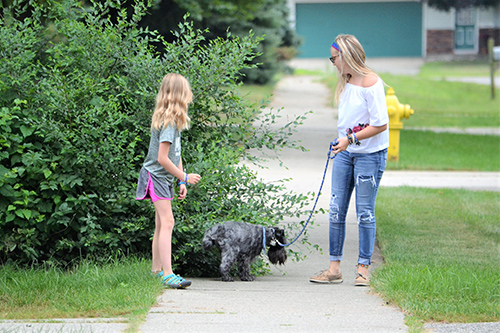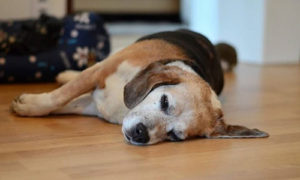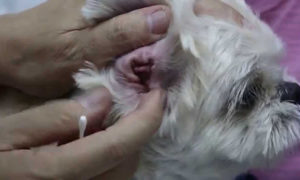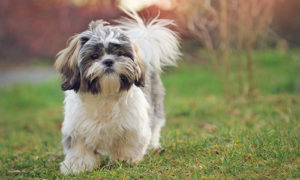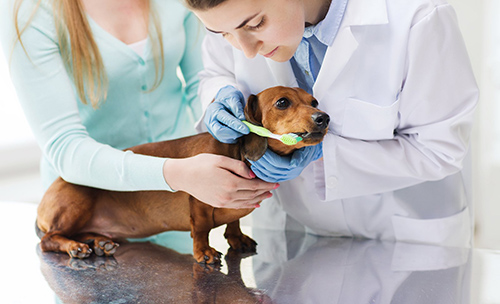
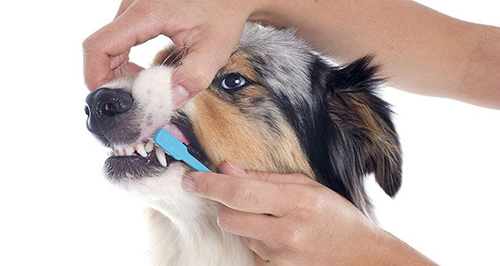
(How to brush my dog’s teeth?) A dog’s mouth is home to various factors and processes as our own, such as bacteria producing plaque, plaque hardening into tartar, gum irritation and recession, tooth infections, and tooth loss. Therefore, it is no surprise that regular tooth maintenance and care are the best way to prevent human and dog dental issues.
How to brush my dog’s teeth is a popular question with new dog owners. But there are times when you will run into certain situations where attempting to brush the dog’s teeth is not recommended. One such case is trying to brush a dog’s teeth that bite if you come near its mouth with a toothbrush. In my opinion, clean teeth are not worth getting bitten by a dog. The other case is when a dog is already suffering from ample amounts of tartar on his teeth.
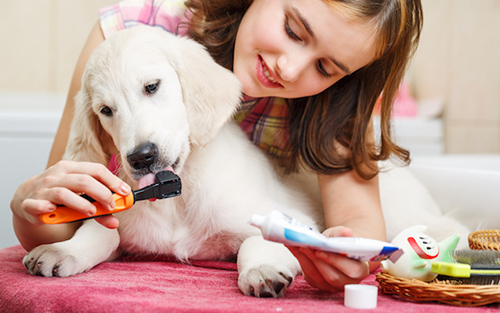
Tartar cannot be eliminated by simple brushing alone. Also, brushing to remove tartar will be uncomfortable for the dog whose gums are already irritated and painful. Therefore, if your dog’s teeth are too far gone, schedule an appointment for dental cleaning with your vet before you begin the following dental care cleaning plan for your dog.
How to Brush My Dog’s Teeth?
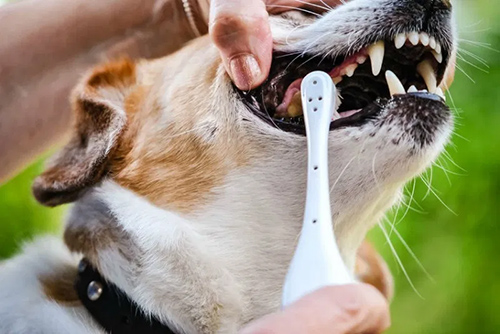
- Decide to brush your dog’s teeth every day. It takes about 36 hours for plaque to harden into tartar; therefore, removing it daily is essential.
- Purchase a soft bristle toothbrush that is the right size for your dog’s mouth and dog toothpaste. You can get by with a “human” toothbrush, but not toothpaste, which contains foaming agents that could cause your dog to vomit. The enzymes in dog toothpaste are better equipped for a dog’s mouth.
- Although a dog has 42 teeth, you can concentrate on brushing the outside surfaces (the lip side) of just four of them:
– The upper canines (fangs)
– The upper fourth premolars (the first large teeth in the back of the mouth)
Those are the four teeth that amass the most tartar, so brushing them alone will contribute pointedly to your dog’s overall dental health. - Put a little water on the toothbrush before placing a dab of toothpaste on it, and gently brush with a circular movement at the gum line of one of the canines for about 5 seconds. Reprise the procedure on the other side with the upper canine teeth.
- The next step is to brush the upper 4th premolars. These teeth are far in the back of the dog’s mouth, but you can still clean them without pulling back the dog’s lip all the way, which can be problematic and uncomfortable for both dog and owner. Mentally picture a straight vertical line running down your dog’s eye. Where that line meets his mouth is where his upper 4th premolar is. Push back your dog’s lip to look—it is the giant triangular tooth.
Whenever you have an idea of where your target is, let the lip go, wet the toothbrush, put a little toothpaste on it, and slide the toothbrush tenderly along the inside of the dog’s mouth until the head of the brush is about even with the eye. Then brush with a circular motion at the gum line for about 5 seconds. Repeat the process with the upper 4th premolar on the opposite side. - Be prepared for your dog to chew on the toothbrush while brushing his teeth. Do not try to discourage this behavior because it will help brush other tooth surfaces.
- Also, be prepared to see some blood when cleaning your dog’s teeth for the first time. This issue occurs because either the gums are swollen, or you are brushing a little too hard with a saw-like back and forth motion at the gum line. Brush with a little less pressure, but do not stop. As time goes on, you should witness less bleeding in about a week as you continue daily cleaning, which will make your dog’s teeth healthier.
- When you become comfortable brushing the four teeth mentioned above, expand your efforts to include the other teeth’ outer surfaces. With some training, you will soon be able to brush all forty-two in a few minutes. Focus your efforts on the gum line because that is where plaque mainly builds up.
If, for some reason, brushing is not possible, contact your vet and find out if an enzyme or antibacterial mouth spray can take the place of brushing to reduce plaque and irritation. Another option is the science diet t/d, which is a prescription dry dog food that scrapes the dog’s teeth as he eats. Rawhide or other chew toys may help clean your dog’s teeth; however, they are not even close to being as thorough or efficient as a daily brushing routine.

